
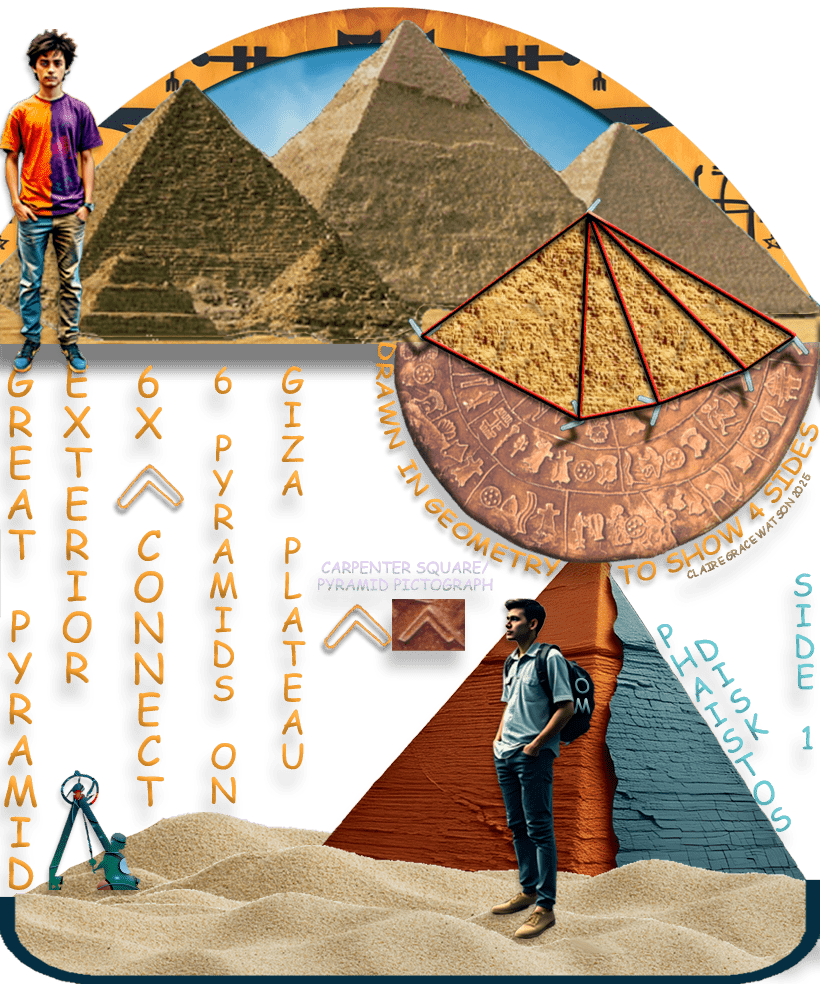
And in that day the country that was more pious than all countries will become impious. No longer will it be full of temples, but it will be full of tombs. Neither will it be full of gods but it will be full of corpses. Egypt! Egypt will become like the fables. (Asclepius, the Nag Hammadi Papyri)

 to the Great Pyramid
to the Great Pyramid
Not everyone walked; some were carried in palanquins.
Phaistos Disk Hidden Pictograph - Great Pyramid, Exterior
Today the chorus is singing, "This is the dawning of the Age of Aquarius," but when the disk was created it was the dawning of the Age of Aries from which came the Greek legend of Jason and the Argonauts. It was preceded by the Age of Taurus, supposed to have
been between 4320-2160 BCE (4525-1875, dates vary). An Age, lasting about 2,000 years or so, receives its name from the sign through which the
sun passes year after year as it crosses the equator at the Spring equinox (equal night), when night and day are equal in length all over the world,
each lasting 12 hours on this day.
During the Mediterranean Bronze Age, the Aegean people were making a transition from the Age of Taurus and old religion of
bull-worship to the Age of Aries. This was no less a transition from a primitive, idolatrous religion, tied to millenia of Dualism as basic to religious thought, to the beginnings of a scientific-philosophic
world-view and Emantionism and the "One" source of life. The Minoan ascendency over the bull is dramatized perhaps by the bull sports at the center of their festivities.
When the shift comes and the ages change from Taurus to Aries, the worship of the bull is not transferred to the worship of the ram, but instead the worship becomes
a quest for god/dess, who is conceived of in such a way as to be sought after. With the Minoans comes the idea of the Seeker and, for them, as well as for the evolution of consciousness, the Seeker of knowledge is finally the same thing as the Seeker of God/dess.
Perhaps this seeking after the goddess in the sky motivated the development of astronomy in Minoan Crete, with the idea that if we
invent telescopes and binoculars and astronomical measuring devices, we can seek the goddess through seeing her, getting closer to her and
knowing her well. Perhaps this astronomical questing for the divine led to our recognition of the universal powers of time and infinity and
the higher powers of destiny, and to conclusions about such things we might have drawn from stargazing. For the Aegean people, these eternal powers
seemed to emanate from the stars, and it stands to reason that the biggest star, Sirius, must be the most powerful. Therefore, from this star,
an eternal and perfect goddess high in the sky, flow all the gifts in heaven and earth.
I've loved reading your research, it's fascinating. You have a great mind for pictographs! (Heidi Bosley)
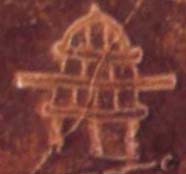

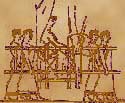
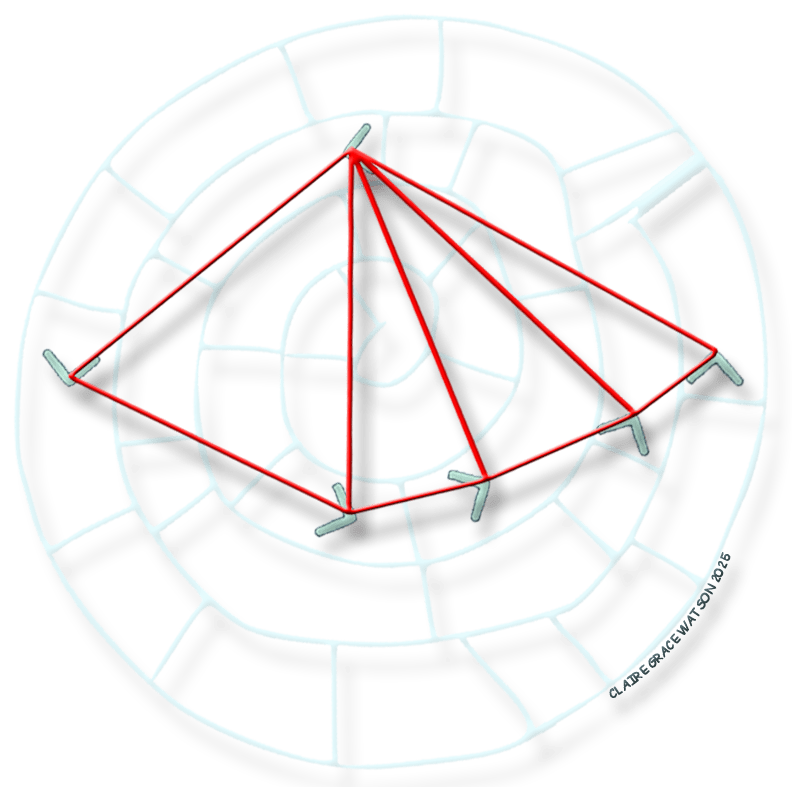
 Read the Phaistos Disk - "Carpenter's Squares (geometry) built the Great Pyramid."
Read the Phaistos Disk - "Carpenter's Squares (geometry) built the Great Pyramid." 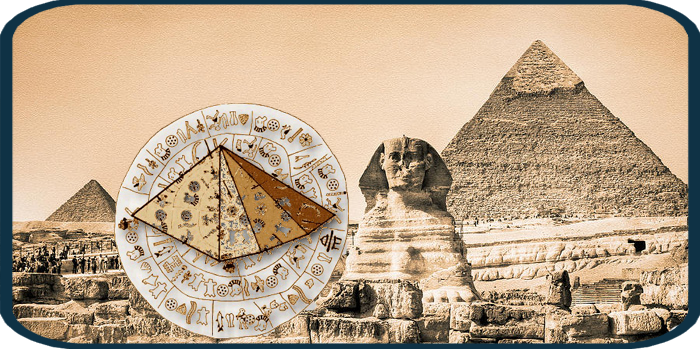
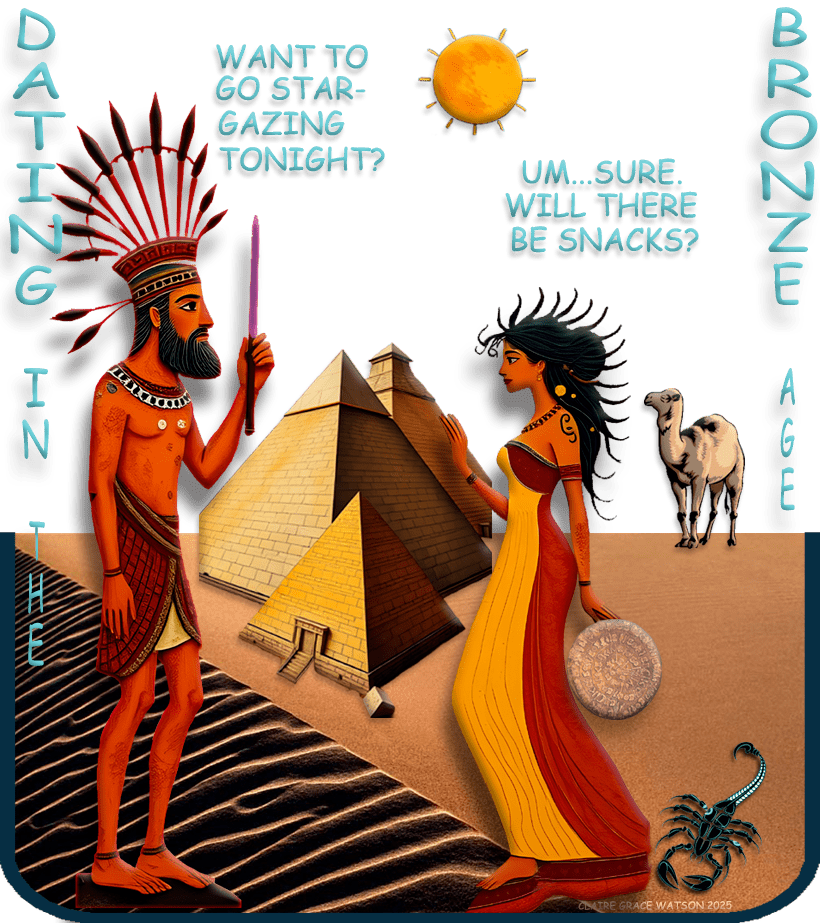 Astronomical Ages, Bull Worship, and the Minotaur
Astronomical Ages, Bull Worship, and the Minotaur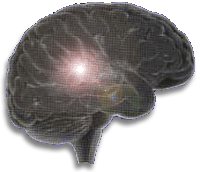 Overlighting this early human fascination with number and geometry were the stars, and perhaps their participation was not passive at all. There is the possibility of human brain embeddedness of starlight (left), which could account for the enlightenment, development, and expansion of human consciousness. We do not have to concede this intimate relationship with the stars to continue this theory of Minoan astronomy, but we do concede the contribution the stars make in the form of the astronomical ages.
Overlighting this early human fascination with number and geometry were the stars, and perhaps their participation was not passive at all. There is the possibility of human brain embeddedness of starlight (left), which could account for the enlightenment, development, and expansion of human consciousness. We do not have to concede this intimate relationship with the stars to continue this theory of Minoan astronomy, but we do concede the contribution the stars make in the form of the astronomical ages. ![]()
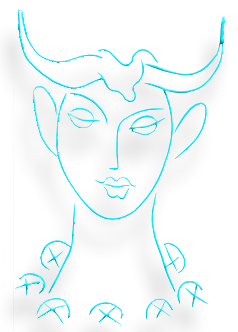 In the Age of Taurus the bull was worshipped as divine. After
perhaps as many as 25,000 preceding years of bull worship, it is not surprising that the bull figured significantly in the Minoan civilization. A bull's
foot appears twice on the Phaistos Disk (left). Egypt had its Serapis, the sacred Osiris-Apis bull. Baal was widely worshipped,
later on the Israelites had their golden calf Moshe (Moses), and painted on the walls of buildings in ancient Sumer are humans with horns. The horns tell
of their status as gods and goddesses. (Minoan Queen Pasiphae drawn by Picasso, right)
In the Age of Taurus the bull was worshipped as divine. After
perhaps as many as 25,000 preceding years of bull worship, it is not surprising that the bull figured significantly in the Minoan civilization. A bull's
foot appears twice on the Phaistos Disk (left). Egypt had its Serapis, the sacred Osiris-Apis bull. Baal was widely worshipped,
later on the Israelites had their golden calf Moshe (Moses), and painted on the walls of buildings in ancient Sumer are humans with horns. The horns tell
of their status as gods and goddesses. (Minoan Queen Pasiphae drawn by Picasso, right)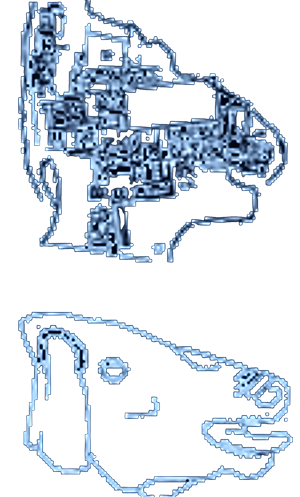 The idea of the bull-god
is foreign to many of us, although it should not be. Even today in India the bull is sacred, and in Spain and Mexico bull sports are still popular, as are
rodeos in the U.S. In Crete, the bull apparently was at the center of both religion and sport. This history of bull-worship clears up some of the mystery
of the Minoan legend of the Minotaur, a bull-being at the center of the bull sports and the maze. It clears up some mystery about Zeus, the Greek
god who often appeared as a bull. And it also shines some light on the worship of the bull-born Dionysis. (Left, Bronze Age palace
groundplan at Mallia, Crete compared with bull's head)
The idea of the bull-god
is foreign to many of us, although it should not be. Even today in India the bull is sacred, and in Spain and Mexico bull sports are still popular, as are
rodeos in the U.S. In Crete, the bull apparently was at the center of both religion and sport. This history of bull-worship clears up some of the mystery
of the Minoan legend of the Minotaur, a bull-being at the center of the bull sports and the maze. It clears up some mystery about Zeus, the Greek
god who often appeared as a bull. And it also shines some light on the worship of the bull-born Dionysis. (Left, Bronze Age palace
groundplan at Mallia, Crete compared with bull's head)
![]()
![]() In the Age of Aries the bull-god
gives over to the ram, whose Golden Fleece is the object of the quest of Jason and the Argonauts. They stopped worshipping the bull - in fact, they slayed
the bull in Crete, or Theseus did, in the legend of Theseus and the Minotaur. Following the Age of Aries is the Piscean Age in which a divine fish
symbolizes the Son of God as the "fisher of men." As we move into the Age of Aquarius, the cup is the symbol of the divine and holds the Water of Life, and
the Knights of the Round Table quest for the Holy Grail. One way or another, either directly or indirectly, we are influenced by the stars. Are they
really eternal powers? The Minoans apparently believed so.
In the Age of Aries the bull-god
gives over to the ram, whose Golden Fleece is the object of the quest of Jason and the Argonauts. They stopped worshipping the bull - in fact, they slayed
the bull in Crete, or Theseus did, in the legend of Theseus and the Minotaur. Following the Age of Aries is the Piscean Age in which a divine fish
symbolizes the Son of God as the "fisher of men." As we move into the Age of Aquarius, the cup is the symbol of the divine and holds the Water of Life, and
the Knights of the Round Table quest for the Holy Grail. One way or another, either directly or indirectly, we are influenced by the stars. Are they
really eternal powers? The Minoans apparently believed so.

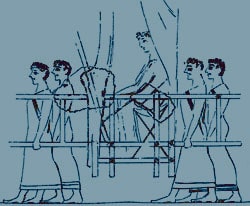 With this new power of thought and technological capability comes the wealth, ease and abundance that we associate with the Minoan civilization, a phenomenal flower
that blossomed in the middle of the Aegean Sea. The Greek creation myth tells the story of how it came to pass that the people were so blessed.
It was because the goddess gave them a son--Zeus--who in turn overthrew the old gods. It is not yet the Age of Pisces when the gift is the son of god.
It is the Age of Aries when the gift is the son of goddess. (left, palenquin pictograph on the Phaistos Disk, right, Minoan palenquin)PagemapBookmap
With this new power of thought and technological capability comes the wealth, ease and abundance that we associate with the Minoan civilization, a phenomenal flower
that blossomed in the middle of the Aegean Sea. The Greek creation myth tells the story of how it came to pass that the people were so blessed.
It was because the goddess gave them a son--Zeus--who in turn overthrew the old gods. It is not yet the Age of Pisces when the gift is the son of god.
It is the Age of Aries when the gift is the son of goddess. (left, palenquin pictograph on the Phaistos Disk, right, Minoan palenquin)PagemapBookmap![]() Comments
Comments
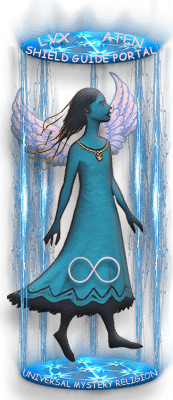 Copyright Notice - Disk of the World - Text and images copyrighted March 21, 1993-2025, Claire Grace Watson, B.A., M.S.T., U.S. Copyright and under the Digital Millennium Copyright Act of 1998, All rights reserved. No part of this web page may be reproduced or transmitted in any form or by any means without written permission from the author, except for the inclusion of brief quotations in a review.
Copyright Notice - Disk of the World - Text and images copyrighted March 21, 1993-2025, Claire Grace Watson, B.A., M.S.T., U.S. Copyright and under the Digital Millennium Copyright Act of 1998, All rights reserved. No part of this web page may be reproduced or transmitted in any form or by any means without written permission from the author, except for the inclusion of brief quotations in a review.